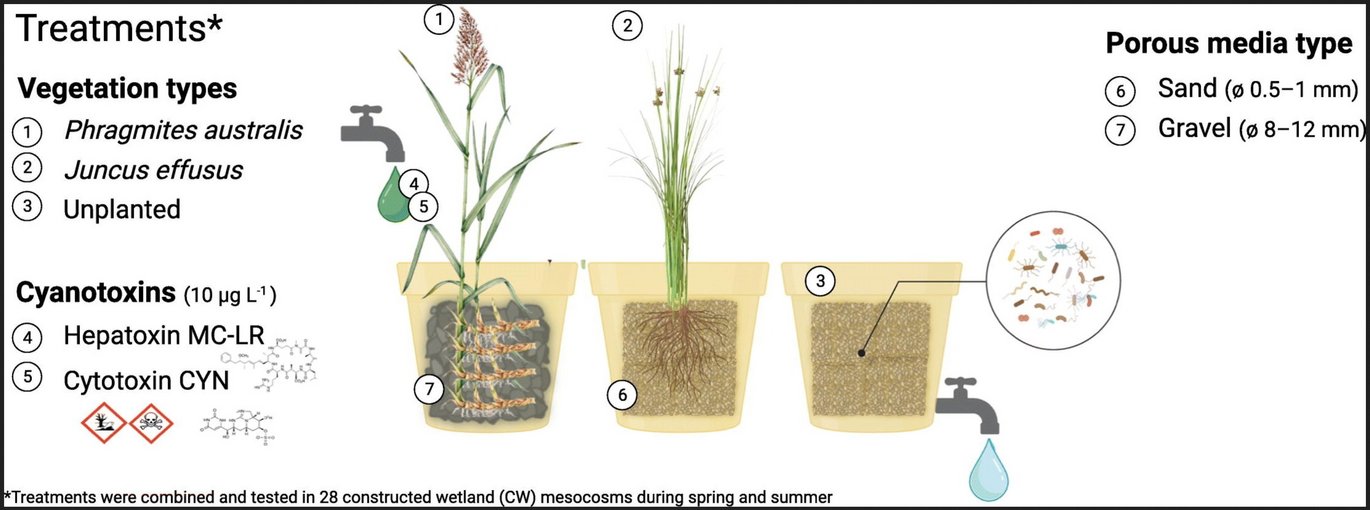Saturated constructed wetlands for the remediation of cylindrospermopsin and microcystin-LR: Plants, microbes, and biodegradation pathways
New publication by Alba Martinez i Quer, Carlos Alberto Arias, Lea Ellegaard-Jensen, Anders Johansen, Maria Lund Paulsen, Ada Pastor, Pedro N. Carvalho.

Abstract:
Harmful cyanobacterial blooms will be more intense and frequent in the future, contaminating surface waters with cyanotoxins and posing a threat to communities heavily reliant on surface water usage for crop irrigation. Constructed wetlands (CWs) are proposed to ensure safe crop irrigation, but more research is needed before implementation. The present study operated 28 mesocosms in continuous mode mimicking horizontal sub-surface flow CWs. Mesocosms were fed with synthetic lake water and spiked periodically with two cyanotoxins, microcystin-LR (MC-LR) and cylindrospermopsin (CYN), at environmentally relevant cyanotoxins concentrations (10 μg L−1). The influence of various design factors, including plant species, porous media, and seasonality, was explored. The mesocosms achieved maximum MC-LR and CYN mass removal rates of 95 % and 98 %, respectively. CYN removal is reported for the first time in CWs mimicking horizontal sub-surface flow CWs. Planted mesocosms consistently outperformed unplanted mesocosms, with Phragmites australis exhibiting superior cyanotoxin mass removal compared to Juncus effusus. Considering evapotranspiration, J. effusus yielded the least cyanotoxin-concentrated effluent due to the lower water losses in comparison with P. australis. Using the P-k[sbnd]C* model, different scaling-up scenarios for future piloting were calculated and discussed. Additionally, bacterial community structure was analyzed through correlation matrices and differential taxa analyses, offering valuable insights into their removal of cyanotoxins. Nevertheless, attempts to validate microcystin-LR biotransformation via the known mlrA gene degradation pathway were unfruitful, indicating alternative enzymatic degradation pathways occurring in such complex CW systems. Further investigation into the precise molecular mechanisms of removal and the identification of transformation products is needed for the comprehensive understanding of cyanotoxin mitigation in CW. This study points towards the feasibility of horizontal sub-surface flow CWs to be employed to control cyanotoxins in irrigation or recreational waters.
